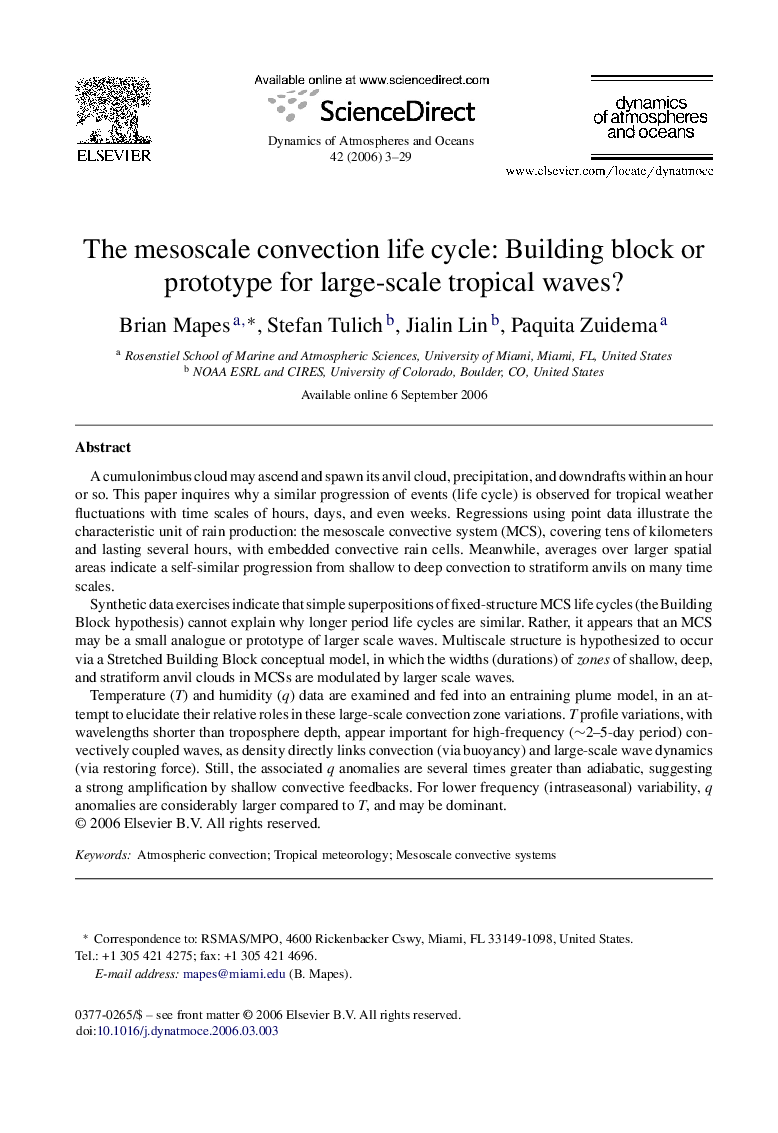| کد مقاله | کد نشریه | سال انتشار | مقاله انگلیسی | نسخه تمام متن |
|---|---|---|---|---|
| 4674256 | 1634254 | 2006 | 27 صفحه PDF | دانلود رایگان |

A cumulonimbus cloud may ascend and spawn its anvil cloud, precipitation, and downdrafts within an hour or so. This paper inquires why a similar progression of events (life cycle) is observed for tropical weather fluctuations with time scales of hours, days, and even weeks. Regressions using point data illustrate the characteristic unit of rain production: the mesoscale convective system (MCS), covering tens of kilometers and lasting several hours, with embedded convective rain cells. Meanwhile, averages over larger spatial areas indicate a self-similar progression from shallow to deep convection to stratiform anvils on many time scales.Synthetic data exercises indicate that simple superpositions of fixed-structure MCS life cycles (the Building Block hypothesis) cannot explain why longer period life cycles are similar. Rather, it appears that an MCS may be a small analogue or prototype of larger scale waves. Multiscale structure is hypothesized to occur via a Stretched Building Block conceptual model, in which the widths (durations) of zones of shallow, deep, and stratiform anvil clouds in MCSs are modulated by larger scale waves.Temperature (T) and humidity (q) data are examined and fed into an entraining plume model, in an attempt to elucidate their relative roles in these large-scale convection zone variations. T profile variations, with wavelengths shorter than troposphere depth, appear important for high-frequency (∼∼ 2–5-day period) convectively coupled waves, as density directly links convection (via buoyancy) and large-scale wave dynamics (via restoring force). Still, the associated q anomalies are several times greater than adiabatic, suggesting a strong amplification by shallow convective feedbacks. For lower frequency (intraseasonal) variability, q anomalies are considerably larger compared to T, and may be dominant.
Journal: Dynamics of Atmospheres and Oceans - Volume 42, Issues 1–4, December 2006, Pages 3–29